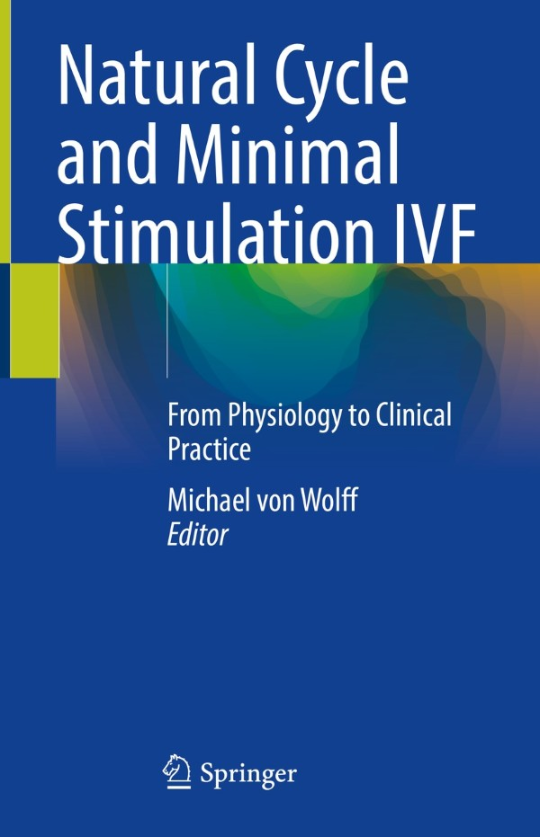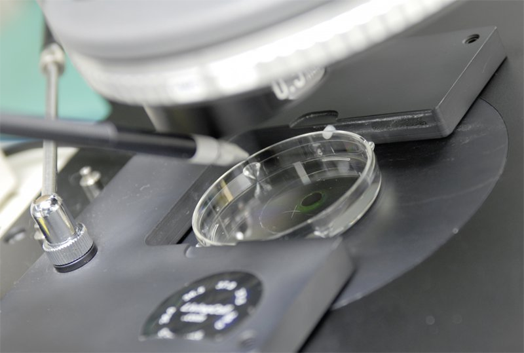 For the first time, a practical guide on the various IVF therapies without or with minimal stimulation has been published.
For the first time, a practical guide on the various IVF therapies without or with minimal stimulation has been published.
The book presents the basics of IVF therapies, describes their clinical applications, costs, risks, success rates and much more on about 300 pages. Part of the book are also about 30 studies conducted by the IVF-Naturelle center in Bern. Also, 2 large similar centers in Japan and New York present their treatment concepts.
The English-language book, which should be largely comprehensible even to laypersons, is available from Internet bookstores.
NC-IVF becomes an increasingly accepted techniques among scientists and clinicians. Prof. von Wolff was invited by a well known scientific journal to write a comprehensive review of this technique. The article was reviewed by blinded experts. Accordingly, the article is an objective description of the state of the art of Natural Cycle IVF.
Read the full length article here.

PIS is now largely unlimited in Switzerland and is allowed in Germany and Austria for certain indications. This technique is promoted saying that it increases the success rate of traditional IVF i.e., IVF with hormone stimulation.
However, this is wrong. For each stimulation, the success rate of IVF after PIS does not increase, but it is likely to decrease due to embryo manipulation. Only the pregnancy rate after the first transfer increases because the embryos with the highest pregnancy potential are selected. There are fewer embryo transfers per stimulation and follicular puncture.
Using PIS, the woman may be become pregnant a little quicker, but not better. There are very few indications for which PIS makes sense: this includes women around the age of 40 with a high reserve of ovaries. Since time is of the essence at this age, it makes sense to select and, if possible, transfer only the very best embryos and start the next stimulation as soon as possible, if necessary.
In the case of the IVF-Naturelle®, the aim is to minimize manipulation and selection by the laboratory. The risks of PIS for the children are still unclear, and we prefer to rely on nature’s own selection. PIS does not make any sense with IVF-Naturelle®, as there is usually only one embryo.
IVF-Naturelle ® is therefore worthwhile, even in the age of PIS. IVF-Naturelle® is and remains the IVF technique with the least strain on the patients. Since overall chances of pregnancy cannot be increased by PIS, IVF-Naturelle® continues to hold a firm place in reproductive medicine and harnesses the natural processes that have been optimized over millions of years.
In Switzerland in particular, there is growing awareness that IVF treatment not only leads to a slightly increased malformation rate, but also to functional changes in the children. These include changes in lipid metabolism, which are accompanied by an unfavourable distribution of body fat and a slightly increased blood pressure. Several but not all studies indicate that a link with IVF therapy is possible. However, this has not yet been confirmed for definite. It is also unclear whether such changes are relevant to children's health later in life.
What are the potential causes of these changes?
The following come into question:
- parental disposition,
- hormone stimulation during traditional IVF,
- fertilization technique in the laboratory,
- culture of oocytes / embryos after fertilization in the laboratory.
Factors 1 and 3 cannot be excluded.
Factor 2, hormone stimulation, can be largely avoided if IVF-Naturelle® is performed. Several studies, including our own study in Bern, have shown that children conceived after IVF have a slightly higher birth weight without hormone stimulation than after traditional IVF. Whether this is because traditional IVF leads to a genetic change in the embryos or to a poorer function of the lining of the womb, is still unclear.
There is also a large study of 4-year-old IVF children showing that children born after IVF without strong hormone stimulation have lower blood pressure levels than children born after traditional IVF.
Factor 4 can also be largely avoided. Embryo selection makes no sense with IVF-Naturelle®, and embryo transfer is possible shortly after fertilization. Longer artificial culture of embryos in the laboratory is therefore not required.
So back to the first question:
IVF seems to have health effects for the children and IVF-Naturelle® may be able to reduce these risks. However, further studies are needed to confirm this. It is also unclear whether the effects of IVF on children's health are relevant in the long term.
 English
English Italiano
Italiano  Français
Français  Deutsch
Deutsch  Spanisch
Spanisch